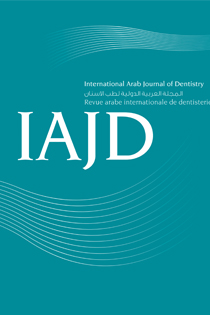Abstract
Gingival hyperpigmentation is most often physiological, due to a large production of melanin by melanocytes. The elimination of gingival stains is performed for aesthetic purposes. Bur abrasion is one of the most commonly used methods. Recently, the use of the Er:YAG laser is one of the most discussed gingival depigmentation techniques in the literature. The major problem encountered after all the depigmentation treatments is the recurrence of colorations. The objective
of this study is to compare recurrence rates after 6 months of gingival depigmentation, using the Er:YAG laser and a diamond bur. 24 hemi-arches in 8 patients were selected. A split-mouth model was adopted: half of the arch was depigmented using the bur, the other half with the Er:YAG laser. The evolution of the treated sites
was followed clinically at 6 months postoperatively, using the DOPI index. Comparison of the average DOPI obtained after bur abrasion and ablation with the Er:YAG laser showed no statistically significant difference in the gingiva repigmentation at 6 months between burtreated sites compared to the sites treated using the laser (p >0.05).
The two techniques are efficient, since the average DOPI has significantly decreased between T0 and T6 in both cases (p <0.001), but none of them showed a complete absence of recurrence at 6 months, and none seems more effective than the other in the intensity of recurrence at 6 months.
The two techniques were equivalent regarding the recurrence of gingival pigmentations at 6 months postoperatively. A larger sample and a longer follow-up will be needed to confirm these results.

